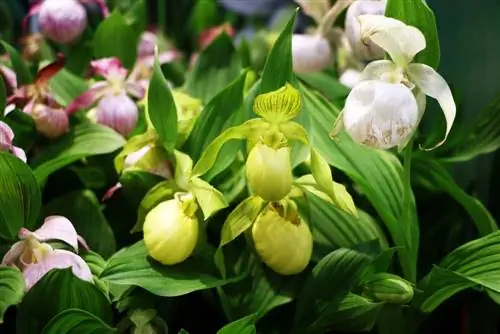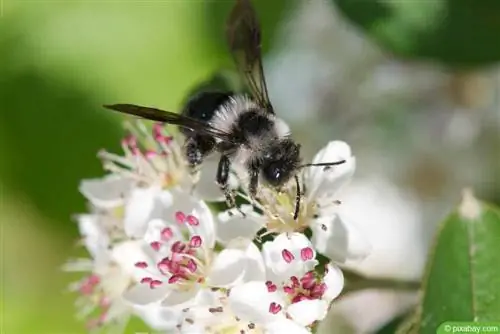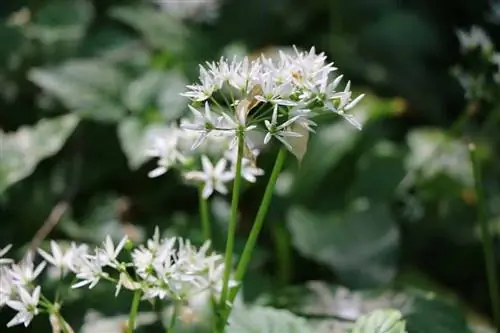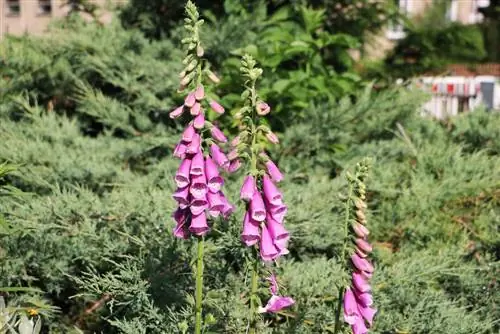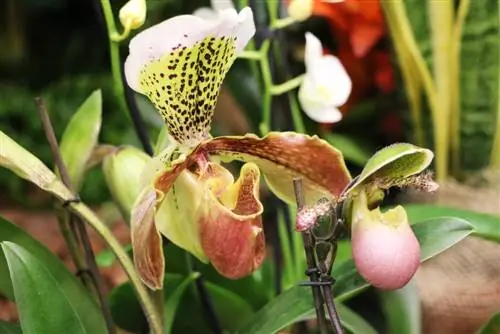- Author admin [email protected].
- Public 2023-12-17 03:39.
- Last modified 2025-01-24 12:45.
Around 25,000 species of orchids exist worldwide. The plant can be found virtually everywhere on earth. In any case, many varieties do not need tropical conditions to thrive. An intact ecosystem is much more important. Where this is still okay, they also grow here, especially in forests, wet meadows and on plateaus. They can even be cultivated in the garden - provided that the strictly protected plants have not been illegally dug up in the forest.
Nature conservation
Orchids are fascinating plants. They score points with their variety of shapes and, of course, with their beauty. It goes without saying that as a plant lover you are delighted to discover a wild orchid species in the forest.
But be careful: there is nothing more than happy
All of our native orchids are protected species. They must not be picked, dug up or damaged. Anyone who does this and gets caught will face a hefty fine.

Our native orchid species have become so rare that this protection is absolutely necessary. Consequently, you have to resist all temptations to simply dig up a wild orchid and bring it into the garden. If you want to enrich your own greenery with local orchids, you should use artificial plants that are available from specialist retailers. A clear proof of origin is then mandatory for real nature lovers.
Species
Around 25,000 species of orchids have now been discovered worldwide. At least 60 wild species still grow in the wild in our latitudes - although the trend is decreasing. The best-known local orchid species is certainly the so-called lady's slipper, which can easily compete with its tropical relatives in terms of shape and beauty. Unfortunately, it has become so rare that it can hardly be found in the wild anymore. Other native orchid species that can also thrive in the garden are:
- Fly Ragwort
- helmet orchid
- Swamp Stendelwort
- Mosquito-Handelwort
- straw yellow orchid
- broad-leaved orchid
- Nestroot
What all of these types of orchids have in common is that in order to thrive they need symbiosis with a fungus that supplies them with vital nutrients. Without this fungus, orchid seeds would not even germinate. As a rule, however, the fungus is included in the potting soil that comes with orchids purchased from specialist retailers.
Location

If you want to cultivate native orchids in your own garden, you don't have to worry too much about it. Contrary to what you might think, orchids are relatively undemanding and do not require much care. However, the right location plays a particularly important role in their well-being. If the location is not right, the plant will not grow and will die sooner or later. If you want to avoid this, the location must definitely meet the following requirements:
- shady
- protected
- loose, well-drained soil
- moist, but not too wet
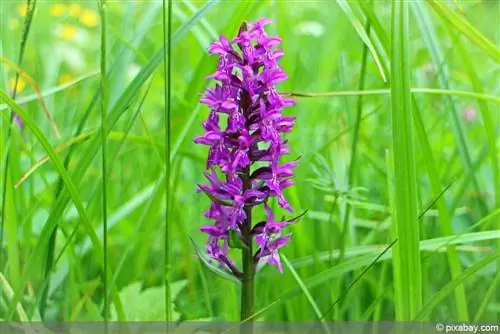
Orchids generally like it moist, but cannot tolerate waterlogging. Soil that has a lot of clay can be poisonous for the plants because water can only drain away poorly. Loose soil mixed with a little sand is therefore mandatory.
Planting orchids
If at all possible, you should plant native orchids in the garden and not try to grow them yourself from seeds. The latter is a highly complex process that requires a lot of knowledge and experience if it is to succeed. Specialist retailers therefore also offer fully developed seedlings that simply need to be planted. In reputable stores you will only get native orchid species that are also suitable for cultivation in the garden. When planting, please note the following:
- The best time to plant is autumn, when the orchid is in the dormant phase
- choose the right location
- loose the soil well and deeply before planting
- plant the plant with the soil provided
- water them well immediately after planting
Orchids also get along very well with other plants. They are therefore also perfect for so-called natural gardens, where they are part of the overall production.
Care
Despite all prophecies of doom, native orchids in the garden are extremely easy to care for. Basically they just need to be watered regularly. In this context, it is important that the soil around the plant is best checked daily. It has to be moist, but under no circumstances should it be really wet. It is important to avoid waterlogging as the orchid cannot tolerate it and would suffer from it. Lime-free rainwater is ideal for watering. Orchids in the garden should only be fertilized moderately - and only during the growth phase in summer. The so-called weak eaters, which include all orchid species, require relatively few nutrients and cannot tolerate too high a s alt concentration. It is best to use liquid fertilizer, which is administered via the irrigation water according to the manufacturer's dosage instructions.
Tip:
It is better to fertilize orchids a little less than too much.
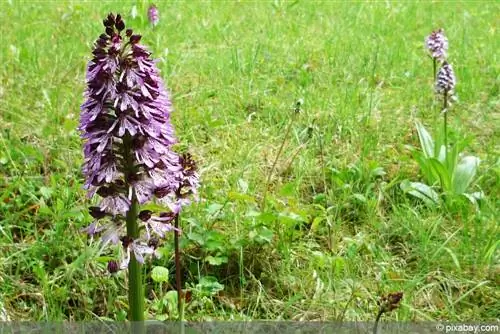
Orchids do not have to and should not be cut. It is sufficient to carefully remove any wilted flowers. As a rule, even that is not necessary.
Wintering
This will also surprise many gardening enthusiasts: the local orchid species that are suitable for cultivation in the garden are generally hardy. Even temperatures of minus 20 degrees Celsius usually don't bother them if they are well protected under a blanket of snow. To be on the safe side, we recommend covering the plants with pine branches in late autumn. There is definitely no need for special overwintering or even digging up the plant. And you can of course stop watering completely during this time. When warmer temperatures prevail again from April and the growth phase becomes apparent, regular watering begins again.

